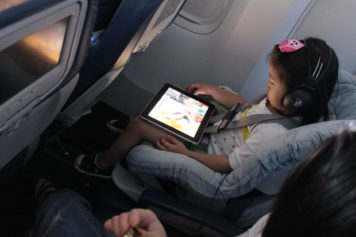With the growing use of smartphones, tablets and other gadgets, the Federal Aviation Administration is reassessing its rules around the use of portable electronics during flights.
The FAA, a U.S. agency that governs aviation safety, announced Monday that it is forming a “government-industry group” to study current policies and procedures surrounding portable electronics, and whether they can be used safely during flights.
Before passengers can use them at certain times during a flight, aircraft operators must ensure that radio frequency interference from the devices don’t cause safety risks, according to current FAA regulations.
“With so many different types of devices available, we recognize that this is an issue of consumer interest,” Ray LaHood, U.S. Secretary of Transportation, said in a release. “Safety is our highest priority, and we must set appropriate standards as we help the industry consider when passengers can use the latest technologies safely during a flight.”
The study group will look at the testing methods that aircraft operators use to see which devices passengers can use safely on-board, and when they can use them, among other issues. However, they will not consider airborne use of cell phones during flights. The group, which includes representatives from the mobile and aviation manufacturing industries, as well as pilots, flight attendants and passengers, will then provide recommendations to the FAA.
The Associated Press reported that it will take until at least next March for a recommendation, and perhaps longer for actual changes to happen. It’s been six years since the FAA launched its last study, according to the New York Times.
While the agency wants to ensure that planes are protected from interference, it is open to loosening regulations around electronics, said Michael Huerta, acting FAA administrator.
“We’re looking for information to help air carriers and operators decide if they can allow more widespread use of electronic devices in today’s aircraft.”
Source: Mashable
